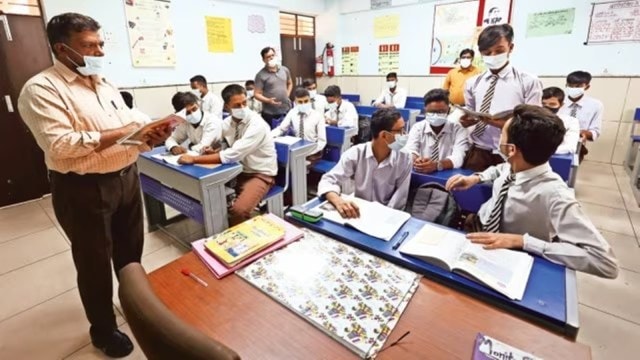
One would imagine that the effective cure to a problem lies in its diagnosis. Once its location is clear, mitigating its ill effects or removing it becomes easier.
However, an incorrect diagnosis may not lead to any substantial change. For example, if an unemployed person lies listless on his bed after searching for jobs the whole day, then that is a symptom of the situation he is in, not the cause of his unemployment. The cause may be an insufficient number of jobs compared to the huge number of applicants. In this context, the individual and the society are also pitched against each other to show who has more power/control over the other. There are arguments on both sides: While great importance is attached to the idea that the individual is in charge of his destiny, too much emphasis on the individual is also a source of concern. There are limits to what individuals can do alone.
But to believe the individual has no agency and is completely under the influence of social forces is also problematic. This is hardly a topic for debate for both are equally powerful but their relative importance would differ from situation to situation. My concern is those social problems which have their origin and causes in the social context but are misperceived as being personal problems whose cure lies with the individual concerned. But why would one want to individualise social problems? Whose interest does it serve?
Take suicide, which the French Sociologist Emile Durkheim in 1897 termed a “social fact”, explaining that there are social forces that cause suicide. But most people still view it as an individual act of desperation. While it is also true that different people respond differently to stressors in the environment, viewing every such case as a reflection of emotional fragility is extremely problematic because the onus of solving the problem shifts from the society/state to the individual. Similarly one may come across excellent teachers and students who swim against the tide and do exceptionally well in a dysfunctional environment. While their struggles are used as inspiration, these stories may in fact be the wrong examples to cite/emulate because the message being sent across through them is, “If they can do well in minimalist school settings, why can’t the others?”
Then there are deep-rooted prejudices against some communities which can hardly be ignored or wished away. For instance, what choice does a Dalit student have who is constantly harassed in an educational institution by his peers and others because of the reservation that he has availed of? What courage and mental strength do we expect from a child who is experiencing humiliation and discrimination day in and day out in almost all spheres of his life? No amount of individual counselling can heal the wounds of Dalit students in Karnataka who were recently asked to clean the septic tanks of their schools. Similar examples are the questions often asked of women who get molested where the blame is put on either what they were wearing, or the place or time the event took place.
There are cases of diverse types as well. It is assumed that if teachers have passion for their job and love for children, then the salaries they are drawing or their tenure should not matter. Alternately, if the cause of the teachers’ stress is in the environment – high pupil-teacher ratio, constant monitoring, training and also being pulled out of the class to perform sundry chores – then no amount of meditation, backward counting, etc, will reduce her stress.
Paulo Freire, the Brazilian educator, introduced “oppression” as a variable to explain the oppression of the dispossessed. He consciously did not talk of poverty for there could be several causes for it. He talked of oppression, which meant that there were oppressors (their intent) and oppressed (their experiences of oppression). He was most concerned about structural reforms like land rights, giving access to clean drinking water, health services, right to literacy, etc., which during his time was the condition to vote.
Through their curricula, pedagogic and assessment-related practices, schools convey several myths, stereotypes and prejudices to all the students, about those who are vulnerable. It is common knowledge that school textbooks suffer from several limitations and unabashedly promote stereotypes about the poor, Dalits, women, disabled people, etc.
That schools can also be violent spaces is well known. There is often a hierarchy between teacher and student, boys and girls, Hindus and Muslims, and most aggressively between “bright” and not-so-bright students. How else do we understand the recent happenings where a teacher in a private school in Muzaffarnagar, UP, unabashedly instructed children in her classroom to hit a student one by one and referred to his Muslim faith? While this incident also has a communal angle, in her eyes, the teacher perhaps thinks that she is doing the right thing. The non-learning becomes an individual (in this case, a community’s problem) for which the teacher punishes him in the manner she deems fit.
In another incident at Jadavpur University, a student belonging to a middle-class family from a village was paraded naked and later found dead after a fall from the second-floor balcony of his hostel. What is beyond comprehension is that despite the victim having made repeated complaints to the authorities about his plight, no action was taken against the perpetrators. Before we start drawing connections between the mental health of the victim and these kinds of despicable acts, as we do for other social evils, we need to understand this basic distinction between what the individual can do and the kind of structural support she requires. For if one were to locate a social problem inside the victims then the solution of mitigating it will also lie within them. This is a fine way of detracting the cause and cure from the real to the imagined location.
The writer is Professor, School of Education, Tata Institute of Social Sciences, Mumbai